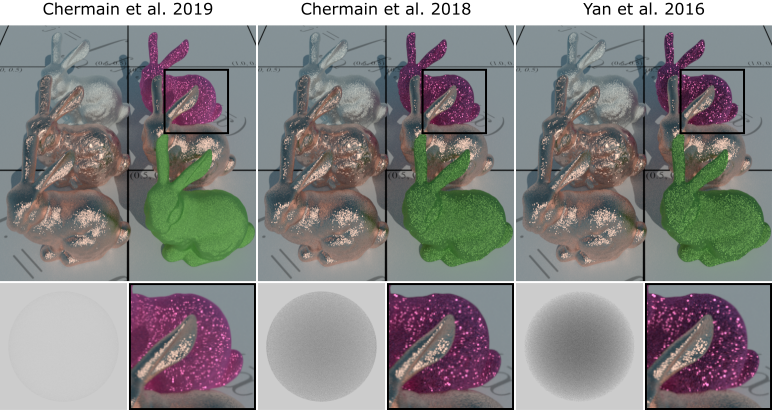Rendu basé physique de micro-reflet
Xavier Chermain
- Ph.D. Dissertation. Advisors: Frédéric Claux and Stéphane Merillou.
- Defense date: 27 November 2019.
- Doctor of Philosophy in Computer Science of the University of Limoges, France.

Abstract
Glint rendering, useful for simulating the appearance of glittery materials, brushed metal or scratched plastic, is a theoretical and technical challenge in computer graphics. It involves the use of spatially varying patch bidirectional reflectance distribution functions (P-BRDFs) with high frequencies. In this thesis we propose two new P-BRDFs based on specular normal maps. Unlike the previous method [Yan et al. 2016], our first BRDF prevents any creation of energy through footprint-dependent normalisation. This normalisation is possible thanks to a new representation of the normal map based on a mixture of non-centered and non-axis aligned Beckmann NDFs. The second method improves the first one and prevents, for the first time, any creation and loss of energy, by simulating multiple scattering in the microgeometry. It enables artifact-free rendering of opaque and sparkling surfaces. In addition, we provide an optimal sampling algorithm using the visibility information of the normals. The key idea of this method is the definition of a V-cavity for each point of the surface. To simulate multiple scattering inside it, we compensate for the energy lost by a single scattering model, by reintegrating lost energy with an energy compensation BRDF. The rendering time and memory footprint of our methods are in the same order of magnitude than previous methods.